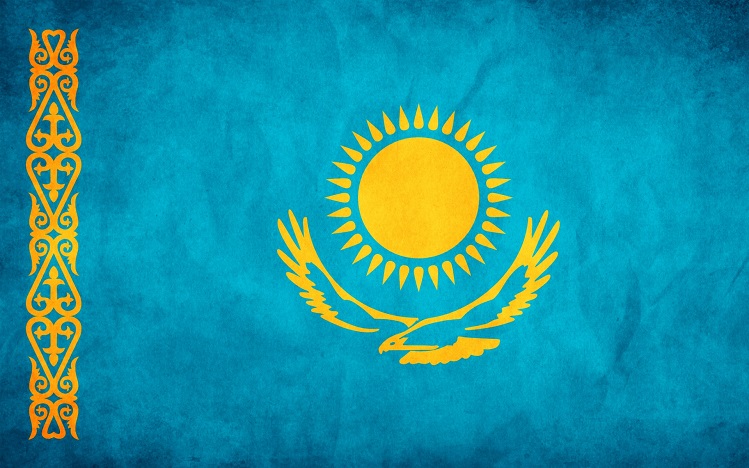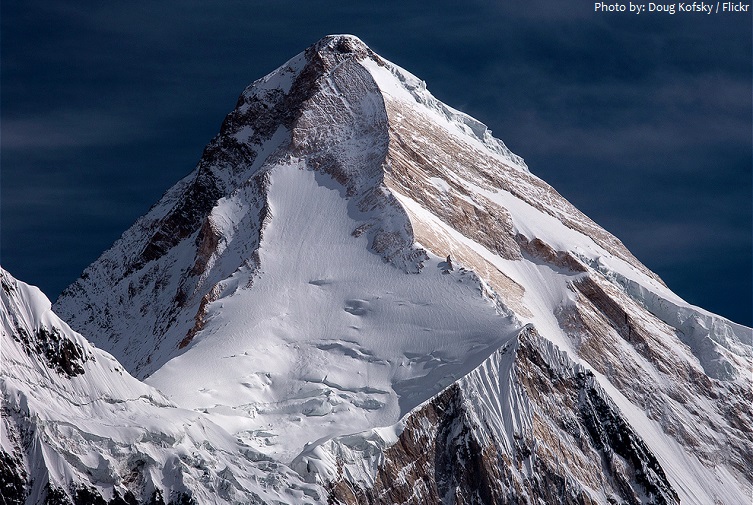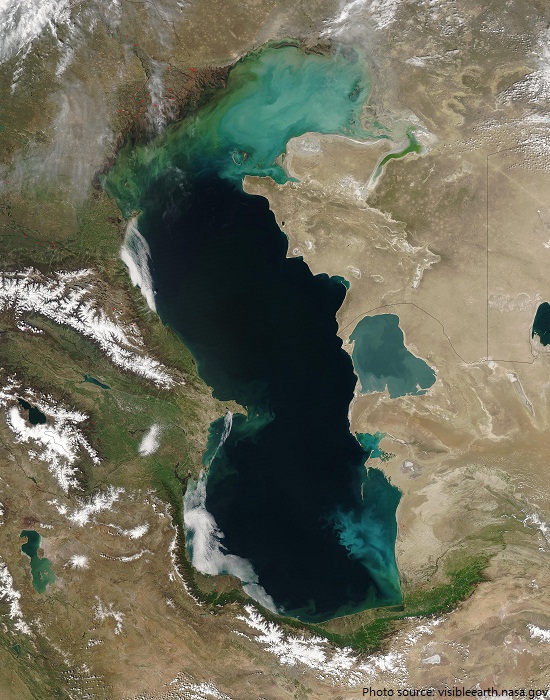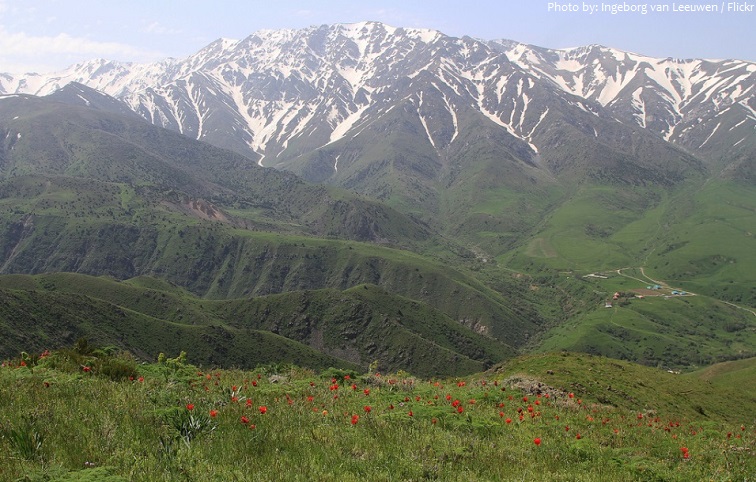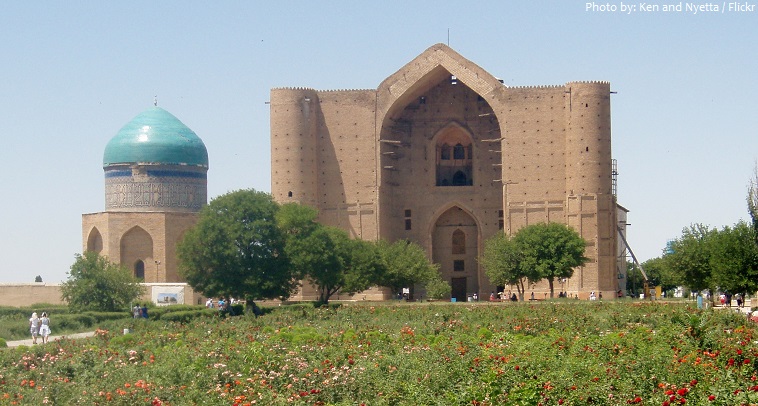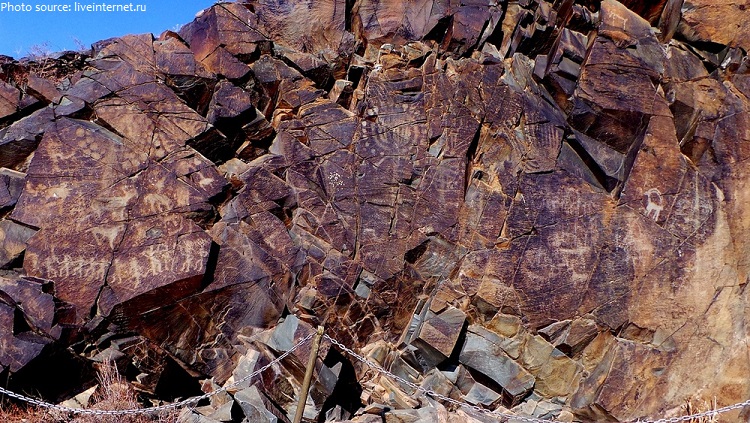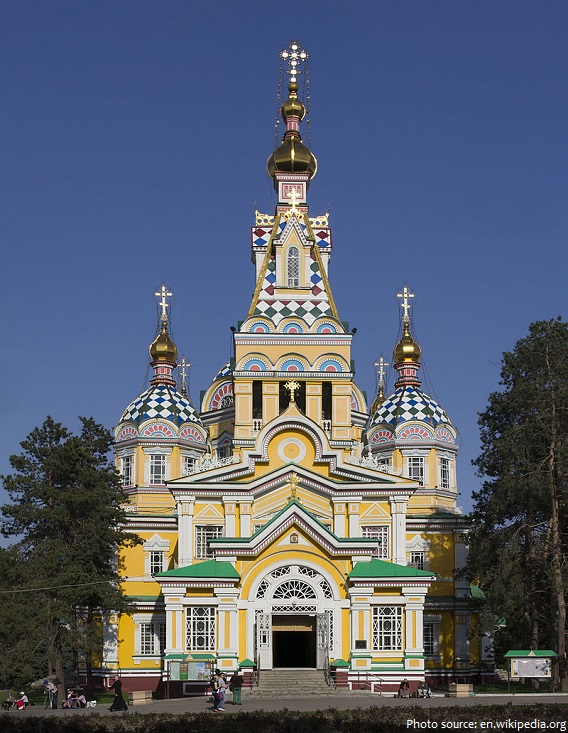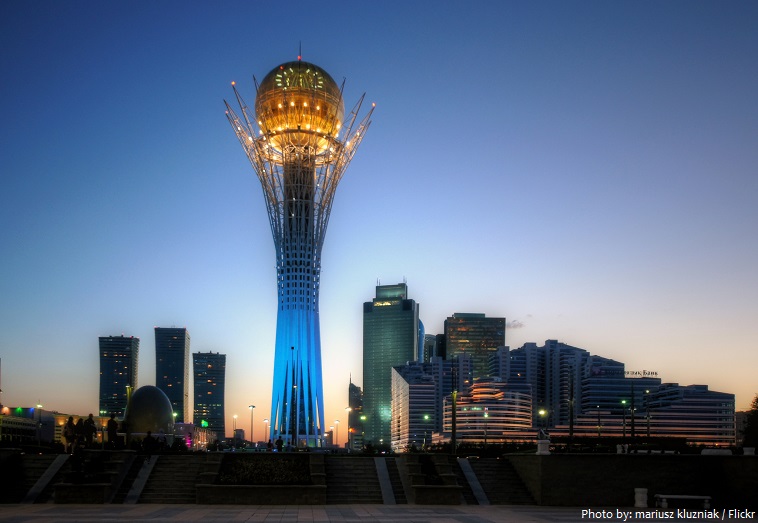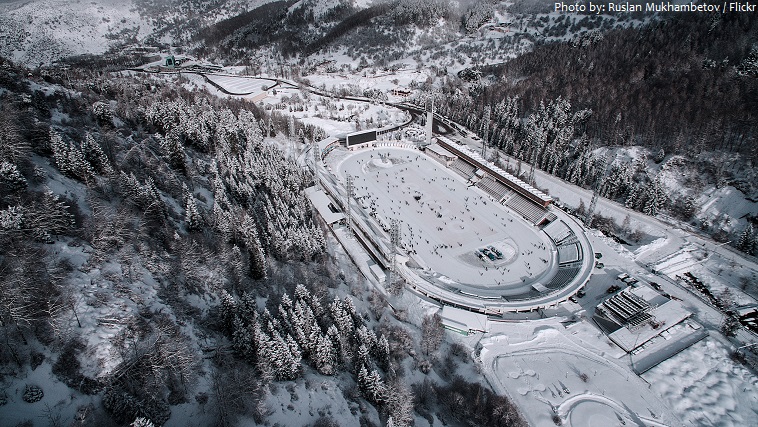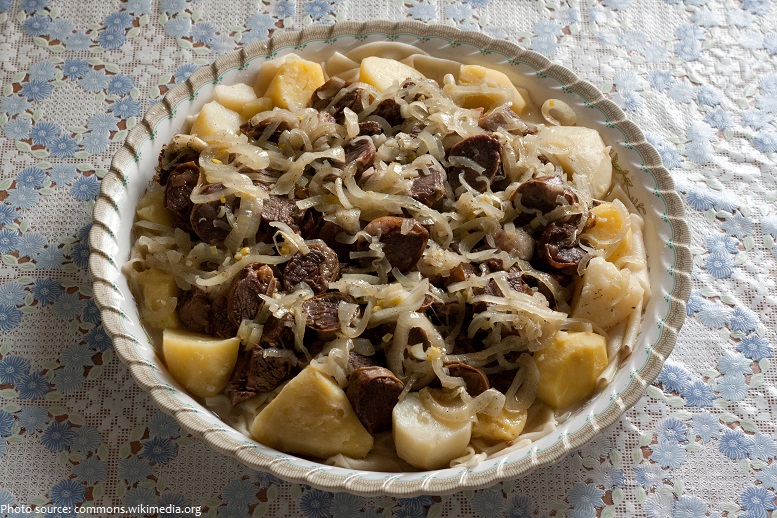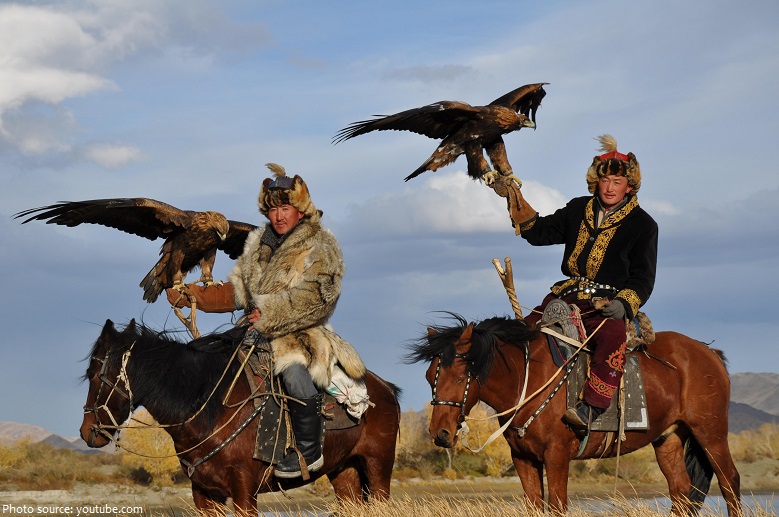Kazakhstan is a transcontinental country in northern Central Asia and Eastern Europe.
The official name of the country is the Republic of Kazakhstan.
Kazakhstan shares borders with Russia, China, Kyrgyzstan, Uzbekistan, and Turkmenistan, and also adjoins a large part of the Caspian Sea.
The official languages of Kazakhstan are Kazakh and Russian.
As of 1 January 2016, the population of Kazakhstan was estimated to be 17,769,475 people.
Kazakhstan is the world’s largest landlocked country, and the ninth largest in the world, with an area of 2,724,900 square kilometers (1,052,100 square miles).
Astana is the capital city of Kazakhstan, straddling the Ishim River in the north of the country. Much of its modern architecture is striking in its scale and design, especially in contrast to the vast, open steppes that surround it.
The terrain of Kazakhstan includes flatlands, steppe, taiga, rock canyons, hills, deltas, snow-capped mountains, and deserts.
The peak Khan Tengri in the Tian Shan Mountains (and on the border with Kyrgyzstan and China) is Kazakhstan highest elevation at 6,995 meters (22,949 feet), but its glacial cap rises to 7,010 meters (22,999 feet).
The lowest point in Kazakhstan is the bottom of the Karagiye Depression at 132 meters (433 feet) below sea level. Located east of the Caspian Sea, it is one of the lowest elevations on Earth.
The country is landlocked, but despite this, Kazakhstan borders the Aral Sea, now split into two bodies of water (1,070 km/664 mi), and the Caspian Sea (1,894 km/1,176 mi).
The Caspian Sea is the largest inland body of water in the world 371,000 square kilometers (143,200 square miles) and it borders Kazakhstan on the west.
There are 10 national parks and nature reserves in Kazakhstan.
The Aksu-Zhabagly Nature Reserve established in 1926 is the oldest nature reserve in Central Asia. It is located in the southern province of the Republic of Kazakhstan. The Nature Reserve stretches over an area of 131,934 hectars (326,016 acres).
Kazakhstan has 5 UNESCO world heritage sites.
The Mausoleum of Khawaja Ahmed Yasawi, in the town of Yasi, now Turkestan, was built at the time of Timur (Tamerlane), from 1389 to 1405. In this partly unfinished building, Persian master builders experimented with architectural and structural solutions later used in the construction of Samarkand, the capital of the Timurid Empire. Today, it is one of the largest and best-preserved constructions of the Timurid period. It became a UNESCO World Heritage Site in 2003.
Tamgaly is a petroglyph site in the Zhetysu of Kazakhstan. The majority of the 5000 petrogylphs are in the main canyon, but there are a number in the many side canyons. The petrogylphs are mostly Bronze Age, but in some cases have been overlaid with Medieval or later etchings. Tamgaly became a UNESCO World Heritage Site in 2004.
The Ascension Cathedral, also known as Zenkov Cathedral, is a Russian Orthodox cathedral located in Panfilov Park in Almaty, Kazakhstan. Completed in 1907, it is claimed to be the second tallest wooden building in the world, but the church of Sapânta and the monasteries of Bârsana and Peri, all in Maramures, Romania, are now all higher.
Bayterek, is a monument and observation tower in Astana, the capital city of Kazakhstan. A tourist attraction popular with foreign visitors and native Kazakhs alike, it is emblematic of the city, which became capital of the country in 1997.
The Medeu is an outdoor speed skating and bandy rink. It is located in a mountain valley on the south-eastern outskirts of Almaty. Medeu sits 1,691 metres (5,548 feet) above sea level, making it the highest skating rink in the world. It has 10.5 thousand square meters (113 thousand square feet) of ice.
Kazakhstan was part of the former USSR and has been independent since 1991.
The country is enjoying strong economic growth because of its large oil, gas, and mineral reserves.
The sun in the flag of Kazakhstan has 32 beams, which symbolize progress and prosperity. The eagle symbolizes the power of the state.
Kazakh cuisine is the cuisine of Kazakhstan, and traditionally is focused on mutton and horse meat, as well as various milk products. Beshbarmak, a dish consisting of boiled horse or mutton meat, is the most popular Kazakh dish.
Kazakhstan’s traditional drink kumis has also been referred to as “milk champagne.” It is made from fermented mare’s milk and is believed to be a cure-all for everything from the common cold to tuberculosis.
The golden eagle is one of Kazakhstan’s national symbols and appears on the national flag.
Berkutchi, or hunting with eagles, is a traditional form of falconry. It is still practiced in Kazakhstan. Hunters train golden eagles or falcons to sight and capture such prey as rabbits, foxes, and smaller birds. The hunters are also called berkutchi and they believe they have to keep their first kill for one year to get good luck.
The apple originates from Kazakhstan, it has been discovered after the first complete sequencing of its genome.
Horses were first domesticated on the plains of northern Kazakhstan some 5,500 years ago.
Out of the 110 elements from Mendeleev’s table of chemical elements, 99 have been detected in Kazakhstan.
Kazakhstan is home to the Baikonur Cosmodome, the world’s first and largest space launch facility. Sputnik, the world’s first orbiting satellite, was launched from there in 1957, and the first manned spaceflight with Yuri Gagarin took off into space from there in 1961. It is leased by the Russians until 2050.
When a Kazakh shooter won the gold medal at a 2012 international sporting competition in Kuwait, the organizers mistakenly played a spoof national anthem from the film Borat instead of the Kazakh national anthem. In the film, British comedian Sacha Baron Cohen plays fictional Kazakh journalist Borat Sagdiyev.
